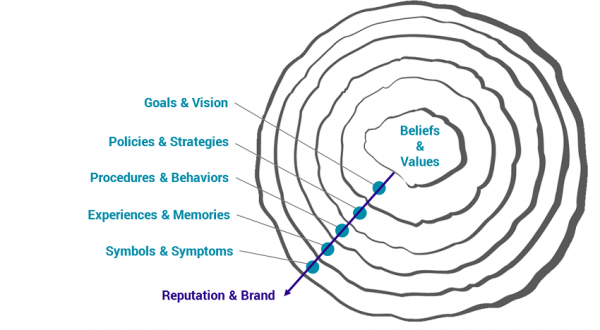Organizational culture is often referred to as “the way we do things around here,” but it is really much more.

Unsplash+ In collaboration with Getty Images
Culture is the assumptions, mysteries and engine of an enterprise’s success – or the poison pill of its failure. “It’s the culture” is a common explanation for the defining characteristics of successful companies, such as Apple’s creativity and Ritz Carlton’s intense customer caring. In an ironic twist, it is also the explanation for companies in decline such as Sears and BlackBerry, and failed companies such as Enron and Pan Circuit City.
Given culture’s power to determine an enterprise’s fate, you might think that asking leaders why their company’s culture is the way it is, would yield more illuminating answers than, “It’s just the way we do things around here.” While that correctly describes how culture works, it’s not a useful answer if your interest is in understanding, building or changing an organization’s culture. Moreover, it is not necessarily a very hopeful answer, especially for an enterprise in decline.
What is it?
Scholars tend to be a bit more specific in their definitions than managers and leaders, as indicated by the following summarized definition from academia: The system of shared values, beliefs and experiences that govern the thinking and behavior of a group and its members. The major function of organizational culture is to initiate and sustain success as well as provide a personal and shared identity for members.
The Structure of Organizational Culture
Cultures are layers of meaning. While its layers are what make a culture so hard to define, understanding can be gained by methodically peeling back the layers to reveal the underlying values and beliefs. The layers of an onion provide a good metaphor for defining and understanding the key elements of organizational culture, and the importance of purposefully aligning those elements. In a “strong culture,” all of the layers are in alignment, creating a structurally united culture. In a “healthy culture,” the layers are not only aligned, but directly and intentionally connected to the enterprise’s success. Given this important distinction, it follows that a strong culture is not necessarily a healthy one.
Company Culture, Brand, and Reputation
When you experience a company from the inside-out, what you experience is its culture. This is the perspective of internal stakeholders such as employees and suppliers. In contrast, when you experience a company from the outside in, what you experience is its brand and reputation. This is the perspective of external stakeholders such as customers and community members. While cultures are built from the inside-out, they are more easily understood from the outside-in.
To review each layer in detail, continue reading by downloading the free whitepaper: What is Organizational Culture?




